How to Choose the Best Moving Head DJ Lights for Beginners
- How to Choose the Best Moving Head DJ Lights for Beginners
- Why choosing the right moving head DJ lights matters
- Understand the main types of moving head dj lights
- Key specifications to evaluate when buying moving head dj lights
- Budget tiers: What to expect at each price point for moving head dj lights
- Control: DMX, wireless, and standalone modes
- Durability, maintenance, and warranty: minimize downtime
- Practical setup tips for beginners using moving head dj lights
- Comparison table: key features to check on spec sheets for moving head dj lights
- Choosing moving head dj lights for specific beginner scenarios
- LQE: a manufacturer option for beginners and professionals
- How to test moving head dj lights before buying
- Warranty, support, and total cost of ownership
- FAQ — Common questions about moving head dj lights
- Next steps — where to buy and how to get help
- References
How to Choose the Best Moving Head DJ Lights for Beginners
Why choosing the right moving head DJ lights matters
If you’re starting as a DJ, mobile entertainer, club operator, or a small venue technician, picking the right moving head dj lights can transform a set from “ok” to memorable. These fixtures are the workhorses of modern lighting — they deliver dynamic beams, color washes, gobo textures, and movement that sync with music. For beginners, the challenge is balancing visual impact, ease of use, reliability, and cost. This guide breaks down what matters most so you can make an informed purchase that fits your needs and budget.
Understand the main types of moving head dj lights
Knowing the primary categories helps you match a light to your purpose. Each type is optimized for different visual roles:
- Moving head wash light: Broad, soft beams for coloring stages and dancefloors. Great for covering areas and creating ambiance.
- Beam moving head light: Narrow, intense beams for striking aerial effects. Best for club-style looks and long-throw applications.
- Moving head profile (spot) light: Sharp-edged beams with shutters and focus. Ideal for gobos, logos, and precise highlights.
- Moving head hybrid light: Combines beam, spot, and wash functions in one unit—versatile but usually pricier and slightly heavier to operate.
For beginners, a mix of wash and beam or a hybrid unit can cover most scenarios without carrying many fixtures. The keyword moving head dj lights encompasses all these types and should guide your search.
Key specifications to evaluate when buying moving head dj lights
Don’t be dazzled by marketing jargon. Focus on measurable specs that affect real-world performance:
- LED output and color quality: Look for lumen or lux figures at a given distance and CRI/Ra (for accurate colors). Higher lumens mean brighter output; CRI over 80 is acceptable for entertainment applications.
- Beam angle and zoom: Narrow beams (1–6°) create sharp shafts; wide angles (20°+) give wash effects. Zoom or optical zoom ranges provide flexibility.
- Pan/Tilt range and speed: 540° pan and 270° tilt are common; speed determines how snappy movements look.
- Gobos, prisms, and effects: Interchangeable gobos, rotating prisms, and frost/focusing features expand creative options.
- DMX channels and control modes: Basic DMX (16–30 channels) can be enough for a single fixture; advanced features require more channels. Also look for standalone, auto, and sound-active modes if you won’t run DMX at first.
- Power and connections: PowerCON or IEC power-in/out and DMX in/out (3- or 5-pin) are standard. Consider units with power linking to reduce cable runs.
- IP rating (for outdoor use): If you plan outdoor events, choose IP65-rated moving head dj lights (waterproof stage lighting) to ensure reliability in wet conditions.
- Weight and mounting: Lighter fixtures are easier to rig and transport, helpful for mobile DJs.
Budget tiers: What to expect at each price point for moving head dj lights
Your budget will heavily influence features and build quality. Here’s a simple breakdown to match expectations:
| Tier | Typical Price Range (USD) | What You Get |
|---|---|---|
| Entry | <$300 | Basic LEDs, modest brightness, limited effects, smaller zoom, simple DMX or sound-active modes—good for beginners and small parties. |
| Mid | $300–$1,000 | Better optics, higher lumen output, wider zoom, more gobos/prisms, smoother pan/tilt, professional connectors. |
| Pro | >$1,000 | High-output LEDs, robust motion systems, extensive effects, interchangeable optics, IP-rated options, higher reliability for large venues. |
Price ranges are general; specific model features vary. For beginners, a mid-tier moving head dj lights investment often yields the best balance of performance and longevity.
Control: DMX, wireless, and standalone modes
Decide how you will control your moving head dj lights:
- DMX control (wired): Industry standard for precise control. Useful when you plan to run multiple fixtures and synchronize complex shows.
- Wireless DMX/art-net: Reduces cable clutter but adds complexity and cost. Handy for temporary setups or outdoor rigs.
- Standalone, sound-active, and master/slave: Great for beginners or small gigs where simple automated patterns are enough. Many fixtures ship with built-in programs that respond to music via onboard microphones.
If you’re new to DMX, choose a fixture that supports simple auto modes plus DMX so you can start quickly and learn control later.
Durability, maintenance, and warranty: minimize downtime
For a beginner, reliability reduces headaches. Look for moving head dj lights with:
- Good manufacturer warranty (1–3 years).
- Serviceable parts: accessible fans, replaceable lenses, and modular electronics.
- Solid mechanical build and tested pan/tilt endurance.
LED lifespans are commonly rated 30,000–50,000 hours by major manufacturers; check spec sheets. Also verify the availability of replacement parts and local technical support.
Practical setup tips for beginners using moving head dj lights
Setup and placement affect effect quality more than most people expect:
- Height and angle: Mount beams high enough for full sweep without blinding the audience. For club beams, higher placement creates more dramatic shafts.
- Spacing: Spread washes to avoid hot spots; cluster beams for intense aerial columns.
- Color palettes: Pre-select color themes to avoid clashing with stage costumes or décor.
- Safety: Use appropriate clamps, safety cables, and rated hardware. Follow local rigging codes.
Testing and rehearsing before a show avoids last-minute surprises.
Comparison table: key features to check on spec sheets for moving head dj lights
| Feature | Why it matters | What to look for |
|---|---|---|
| LED output / Lux @ X m | Shows brightness at distance | Compare lux at 5m/10m |
| Beam angle / Zoom | Determines beam width and versatility | Wide zoom range (e.g., 3–45°) is best |
| Pan/Tilt | Movement range and speed | Wide pan (≥540°), smooth stepless movement |
| Gobos / Prisms | Texture and multiplicity of beams | Interchangeable gobos and rotating prisms add value |
| Control modes | Ease of integration | DMX + sound/auto + wireless options |
| IP rating | Indoor vs outdoor use | IP65 for outdoor, IP20 for indoor |
Data for lux/beam often comes directly from manufacturer datasheets; always verify spec sheets for apples-to-apples comparisons.
Choosing moving head dj lights for specific beginner scenarios
Here are quick recommendations based on typical use-cases:
- Mobile DJ & wedding gigs: Lightweight moving head wash + a couple of beam units for uplighting and dancefloor effects. Prioritize sound-active modes if you won’t use DMX.
- Small club/bar: Combine beam moving head lights for aerial effects with profile spots for logo/gobo projection. Consider IP44 if occasional outdoor access is expected.
- Small theatre or corporate events: Moving head profile lights with reliable color mixing and gobos for sharp projections.
- Outdoor events/festivals: Waterproof stage lighting (IP65) and power linking to minimize failures and cable runs.
LQE: a manufacturer option for beginners and professionals
LQE was founded in 2008 and is headquartered in Foshan, China. We are a professional OEM/ODM stage lighting equipment manufacturer specializing in the R&D, production, and sales of middle- and high-end digital stage lighting. Our production base covers an area of about 10,000 square meters, has the ability to produce 100,000 lighting fixtures annually, and has 80 national patents.
Our range of stage lighting equipment is diverse, including various moving head lights and static lights, suitable for applications in theaters, music concert stages, studios, broadcasting, religious spaces, exhibitions, nightclubs, leisure venues, theme parks, and more.
We are committed to providing first-class modern stage lighting equipment and exceptional customer service, all while maintaining the best value and cost-effectiveness in the industry. Our goal is to deliver high-quality, long-lasting lighting solutions that help stage designers and producers realize their vision. Our vision is to become the world's leading manufacturer of LED stage lighting.
For beginners evaluating moving head dj lights, LQE’s advantages include:
- A broad product range spanning Waterproof stage lighting, beam moving head light, Moving head hybrid light, Moving head wash light, moving head profile light, LED effect light, LED studio light, LED par light, and Lighting accessories.
- OEM/ODM flexibility — useful if you want custom gobos, colors, or branding down the line.
- Production scale and patent-backed R&D, supporting product reliability and ongoing improvements.
- Cost-effectiveness: middle- and high-end offerings designed to balance price and performance for venues and touring DJs.
If you want fixtures that are easy to integrate, offer good support and spare parts availability, and are produced at scale, LQE is a credible manufacturer worth considering when choosing moving head dj lights.
How to test moving head dj lights before buying
If possible, audition fixtures in a setting that mimics your real environment. Key checks:
- Brightness and beam cut-off at typical mounting distances.
- Color mixing on skin tones and fabrics (CRI and color balance).
- Motion smoothness and noise level (fans/gearing).
- Ease of menu navigation and DMX addressing.
- Build quality and feel of clamps and connectors.
Many vendors offer demo units or local dealers who can help you test before committing.
Warranty, support, and total cost of ownership
Consider total cost, not just bottom-line price. A slightly more expensive, well-supported moving head dj lights purchase can save money over time through lower maintenance and longer life. Ask about:
- Warranty period and what’s covered (LED modules, power supplies, mechanical parts).
- Availability of spare parts and repair centers.
- Technical support response times and documentation quality.
FAQ — Common questions about moving head dj lights
Q: What is the best type of moving head dj lights for a beginner DJ?
A: A combination of moving head wash lights for stage color and at least one beam moving head light for aerial effects is versatile and beginner-friendly. Hybrid units are a good single-unit solution if your budget allows.
Q: How many moving heads do I need for a small club?
A: For a small club (100–300 people), a practical setup is 4–8 moving heads: 2–4 wash units and 2–4 beams or hybrids. The exact number depends on venue size and mounting positions.
Q: Do I need DMX to run moving head dj lights?
A: Not always. Many fixtures include standalone and sound-active modes that work out-of-the-box. DMX is recommended for synchronized shows and advanced control.
Q: Are all moving head dj lights safe for outdoor use?
A: No. Only fixtures with an IP65 (or similar) rating are suitable for outdoor use with rain exposure. Indoor fixtures commonly have IP20 ratings and should be kept dry.
Q: What maintenance do LED moving head dj lights require?
A: Regular cleaning of lenses and cooling fans, periodic firmware updates if available, and checking mechanical parts and safety clamps. LEDs require less frequent maintenance than discharge lamps but still need care.
Next steps — where to buy and how to get help
Start by defining your use case (mobile gigs, club, theater), your budget, and whether you will use DMX. Request spec sheets and demo units from reputable manufacturers like LQE and test in a realistic setting. If you want assistance selecting the best models for your situation, contact LQE’s sales or technical team for tailored recommendations and product demos.
Contact sales / View products: Reach out to LQE to discuss moving head dj lights options, request datasheets, or arrange demonstrations. Their experience manufacturing middle- and high-end digital stage lighting makes them a practical partner for beginners upgrading to professional gear.
References
- Manufacturer datasheets and technical guides from leading lighting manufacturers (e.g., Martin by HARMAN, Chauvet Professional) — for typical LED lifespans and lux specifications.
- Industry publications such as Lighting&Sound America — for best practices in rigging and control.
- ETC (Electronic Theatre Controls) product and educational materials — for general guidance on color quality (CRI) and LED maintenance.
- LQE company production and patent information as provided by the manufacturer.
The 10 Key Factors in stage par lights That Affect Cost
What are the different types of par lighting?
How to start the moving head stage lights business ?
How to Choose the professional led stage lights manufacturer and supplier in us?
Distributor
What is your typical lead time for distributor orders?
Our standard production lead time is 15–30 working days depending on order volume and customization requirements. For stocked models or repeat orders, we can offer shorter delivery times.
Can LQE help with product training and technical guidance?
Absolutely. We offer remote training sessions, user manuals, installation guides, and continuous technical support to help your team understand and sell our products with confidence.
Do you offer OEM/ODM support for distributors?
Yes, as a professional OEM/ODM manufacturer, we support brand customization, including logo printing, packaging design, and even custom features based on project needs.
What support does LQE offer to its distributors?
We provide our distributors with a full package of support, including:
Marketing materials and product catalogs
Technical training and manuals
Fast-response after-sales service
Exclusive regional pricing and policies (for qualified partners)
Priority access to new products and updates
What types of companies can become LQE distributors?
We welcome partnerships with companies that have experience in the entertainment, AV, lighting, or stage equipment industries. Whether you are a local reseller, importer, system integrator, or project contractor, we are open to exploring win-win cooperation.
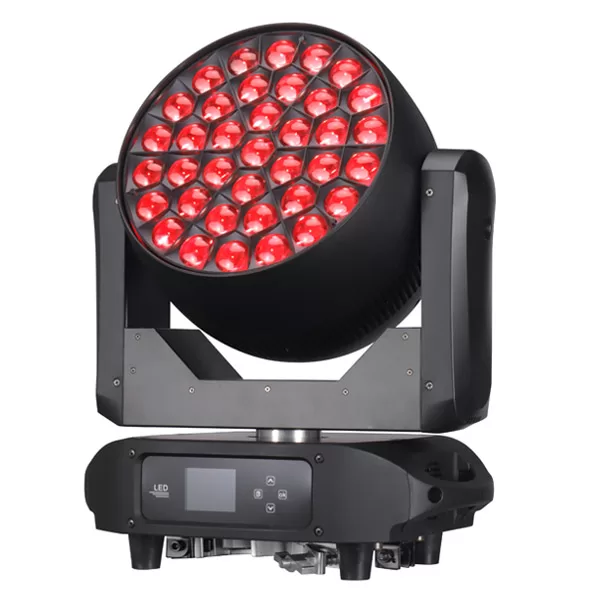
800w 37x40w RGBW Stage Moving Head Wash Light LW800
800W 37x40W LED RGBW Mulichips Moving Head Wash Lights with Zoom (5°-50°), Covering Large Range and Long Distance. Designed to deliver a 5°–50° ultra-large zoom range to achieve a greater wash effect, illuminating stages and events with stunning ring control lighting effects.

LED Moving Head Stage Wash Light LW200Z
The versatile moving head stage light provides a powerful lighting solution for theaters, concerts, and large outdoor performances. Suitable for theaters, TV stations, entertainment stages, and large outdoor performance scenes.

600w 19x40w RGBW Stage Moving Head Wash Light LW600 Zoom IP20
600W 19x40W LED RGBW Mulichips Moving Head Wash Lights with Zoom (5°–50°), Covering Large Range and Long Distance. IP20: Designed to deliver a 5°–50° ultra-large zoom range to achieve a greater wash effect, illuminating stages and events with stunning ring control lighting effects.
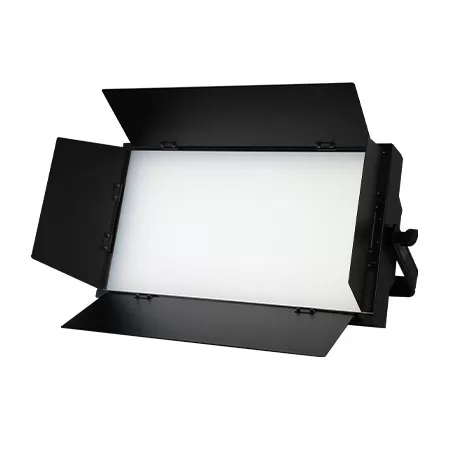
LED Studio Light Panel PL601
Achieve high-quality lighting for your photography and videography projects with our advanced LED studio light panel. Simple and clear display interface, easy to understand, simple, and practical.

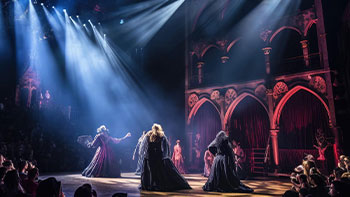
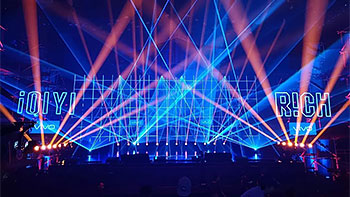

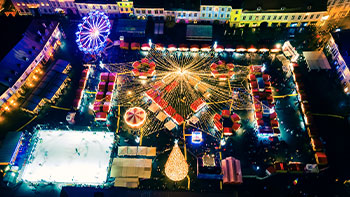








Linkedin
YouTube
Whatsapp: +8618924548390
TikTok